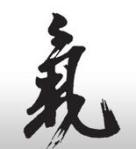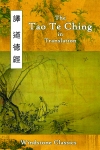 I have a rather long story to make a rather simple point, so bare with me. . .
I have a rather long story to make a rather simple point, so bare with me. . .
After being in Taiwan for about a year, my ATM card stopped working. This was stressful because I was far from home, without cash, and sick. The ATM machine kept spitting out a piece of paper that said my card was 異常, which basically means out of the ordinary. I figured out that this probably meant the machine could not read my card.
Fast forward to today. I live in a building where I have to use a “smart” card to get into the public areas, elevator, and the main door to my building. The smart card was not working and I went and told the door man that my card was 異常. He smiled and said the words that I have learned do not mean what they say: Your Chinese is so good. Translation: that was too formal, too weird, and you didn’t really use that correctly. Someone later told me that this is normal for written language, but probably not many people would say it.
When I first came to Taiwan, my Chinese was awful, but people often told me how good I was. It is a joke among Westerners here that if someone keeps telling you your Chinese is good, it’s time to go back to school. They use this as an encouragement to keep studying. If it’s really good, then they usually just talk to you. The point is that in communication, meaning is not always to be taken at face value.
How does this relate to reading classical Chinese and medical texts? Well, maybe it doesn’t, but I’m going to try!
In verbal communication, I’m facing the person and I can usually pick up on several cues to let me know what the meaning behind the words is. Do they really mean my Chinese is good? Actually, sometimes they do and I can usually pick up on this. Equally obvious is when they don’t mean this, like when I say “uh” more frequently than comprehensible words.
In reading, trying to understand meaning takes away that face-to-face advantage. Add that we are dealing with not only a different culture, but a completely different time, and this becomes a big challenge. We have to know as much as we can about character definitions and classical Chinese grammar, or from the very beginning we will be completely lost and misunderstand passages.
One of my better habits is to pick up a source text (say the Su Wen or Nan Jing) and take some notes on my own interpretation. Then I pick up some of the classical commentaries and read as much of that as I can. Then, I pick up a translation into modern Chinese and later in English, if one exists. What fascinates me is how different all of our interpretations are (and how I can be completely wrong). Sometimes, authors allude to even more ancient literature or written works of their time. Sometimes, I have to search meticulously through ancient dictionaries to find a very rare use of a character before it makes sense. I still have notebooks filled with things I have not yet figured out.
The point is, it takes a lot more work to understand meanings in classical texts. It’s not as simple as a facial expression or tone of voice. I have found that when I come across sentences or chapters that are initially confusing, my first impressions are almost always wrong (or at least a little off) and I chalk this up to the fact that I live in a different time and culture. The good news is: after some time, it is easy to pick up on certain patterns and character uses and with practice, sentences where the meaning is not clear or just plain takes research to figure out become less frequent. With practice, the number of completely mind boggling phrases/sentences will lessen.
I set none of my conclusions in stone simply because I have went back to something many times and found something new or found out that I was completely wrong. What I find sad is when people are so convinced they are “right” that there is no chance to learn anything further (and there is a lot of this in Chinese medicine!).
If all of this sounds too challenging, then I understand. It takes a lot of work to really arrive at a solid understanding of an ancient language. You may not have the smirk of another person to tip you off, but with a lot of patience, hard work, and the desire to learn a variety of skills, anyone can improve.
 The Character Writing workbooks are finally finished and available! This project took much longer than anticipated, but they are finally done. The characters from all three books are available together or separately (see below). The samples are still available here if you want to review the first four chapters from Volume I first.
The Character Writing workbooks are finally finished and available! This project took much longer than anticipated, but they are finally done. The characters from all three books are available together or separately (see below). The samples are still available here if you want to review the first four chapters from Volume I first.



 Notice that the first stroke is the upper most stroke, and the long line under it is next (written from left to right). Below, there are two similar strokes, and the one on the left is first. This is a simple character meaning “six” and is quite simple to write. Things get a little more complicated with more complex characters, and you can see that the simple rules above do not apply:
Notice that the first stroke is the upper most stroke, and the long line under it is next (written from left to right). Below, there are two similar strokes, and the one on the left is first. This is a simple character meaning “six” and is quite simple to write. Things get a little more complicated with more complex characters, and you can see that the simple rules above do not apply:  I think for those serious about developing a long-term ability to read, learning the basics of writing is essential. The reason I did not teach this in the first volume is simple-there is so much free information about writing characters that I didn’t feel it was necessary. I could not have provided anything more valuable than information that is already free online, and the only way to get more valuable information is to take a class with a teacher who helps you in person (or through the program I will mention below). Here are some of the resources I have found that can help you learn to write characters:
I think for those serious about developing a long-term ability to read, learning the basics of writing is essential. The reason I did not teach this in the first volume is simple-there is so much free information about writing characters that I didn’t feel it was necessary. I could not have provided anything more valuable than information that is already free online, and the only way to get more valuable information is to take a class with a teacher who helps you in person (or through the program I will mention below). Here are some of the resources I have found that can help you learn to write characters: I have several updates. First, Windstone Press is now making Vol. II
I have several updates. First, Windstone Press is now making Vol. II  I have changed the name of this site from “Classical Chinese Medicine” to “Classical Chinese & Medicine.” This is not a big change, but the reasons for doing so have multiplied recently.
I have changed the name of this site from “Classical Chinese Medicine” to “Classical Chinese & Medicine.” This is not a big change, but the reasons for doing so have multiplied recently. “Don’t feel the pulse. Feel the Qi behind the pulse.” I was told this many times during one of my internships with a teacher trained in a unique style of acupuncture. Prior to this, I had thought feeling the pulse was just a matter of feeling the bumping of the vessel against my fingers and then giving that sensation a quality description. I had no idea how to feel the Qi behind the pulse, but I was trying with all of my might to figure it out.
“Don’t feel the pulse. Feel the Qi behind the pulse.” I was told this many times during one of my internships with a teacher trained in a unique style of acupuncture. Prior to this, I had thought feeling the pulse was just a matter of feeling the bumping of the vessel against my fingers and then giving that sensation a quality description. I had no idea how to feel the Qi behind the pulse, but I was trying with all of my might to figure it out. Have you ever noticed that everything in China has a 5,000 year history? Chinese medicine is said to have started 5,000 years ago-it says so on most practitioners’ websites. Qi Gong also has an apparent history of 5,000 years. According to a quick google search, art, massage, tea, calligraphy, culture, government, farming methods, herbs, language, and probably a few more things I am missing share this. It seems everything in China started in about 3,000 BC.
Have you ever noticed that everything in China has a 5,000 year history? Chinese medicine is said to have started 5,000 years ago-it says so on most practitioners’ websites. Qi Gong also has an apparent history of 5,000 years. According to a quick google search, art, massage, tea, calligraphy, culture, government, farming methods, herbs, language, and probably a few more things I am missing share this. It seems everything in China started in about 3,000 BC.


